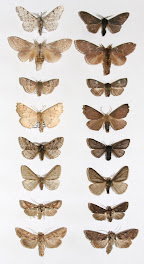
The above is a picture of a parasitic hairworm - a species of Nematamorph. They have a unique pattern of reproduction:
Gordian worms or hair worms are nematamorphs, a phylum of freshwater invertebrates. Gordian worms live most of their lives as foot long, ribbon thin animals, in the rivers, where they mate and produce eggs. Once eggs develop into larvae, larval gordian worms must infect an aquatic insect larvae, which metamorphosizes and carries the gordiid onto shore. Once onshore, the gordiid encysted inside the aquatic insect must be eaten by a cricket or grasshopper, in which the gordian worm feeds and matures. Gordian worms only feed while inside their cricket or grasshopper host. For the gordian to complete its lifecycle, the infected cricket must then die and fall into water.
A mystery has always been how they get their hosts to fall into the water. Recent research has taken a step towards solving this mystery
Now Biron and his colleagues have shown that the worm brainwashes the grasshopper by producing proteins which directly and indirectly affect the grasshopper’s central nervous system.
Two different proteins seem to be involved. One mimics the hosts protiens and affects the central nervous system. The second is:
"...linked to geotactic behaviour – the orientated movement of an organism in response to gravity."
You can watch a video of a grasshoper plunging to it's death here
Added About an Hour Later: National Geographic News also has a story on this:
"It's one of the most horrific things I've ever seen," Loxdale said. "It makes the science fiction film Alien look pretty tame in comparison."
For example, a type of parasitic flatworm targets cockles in New Zealand, driving the marine mollusks to the surfaces of muddy bottoms in shallow waters. There, oystercatcher birds snap the cockles up and eat them, flatworms and all. The shorebirds serve as the final hosts in the flatworms' complex life cycle.
"Parasitic wasps can also make the host weave a special cocoon-like structure to protect the wasp pupae [offspring] against heavy rain," Thomas added.
While revelations about the hairworm's antics may inspire a new generation of sci-fi aliens, the study team says their findings may also help the development of new medical treatments.
Biron says mind-altering human pathogens—such as those that cause rabies, sleeping sickness, and toxoplasmosis—may manipulate their victim in similar ways.
So apparently, this is not unprecedented. Given the rampant amount of chemical warfare going on in the insect world I can't say I surprised to find out that some parasites use chemical means to control their hosts behavior.








